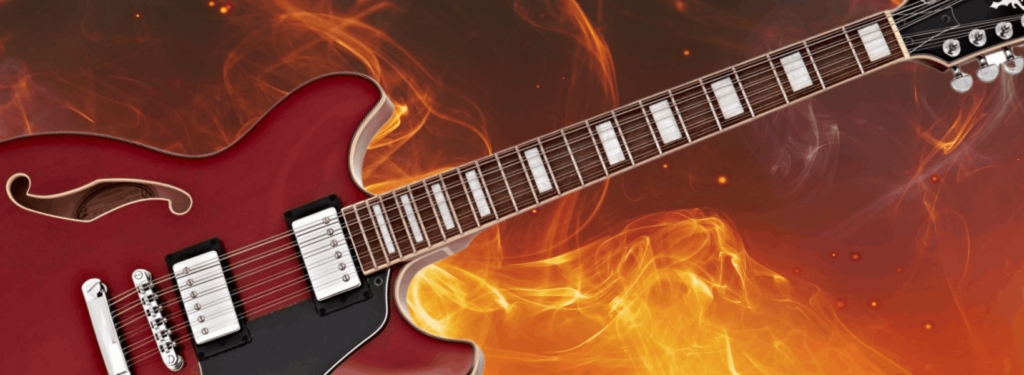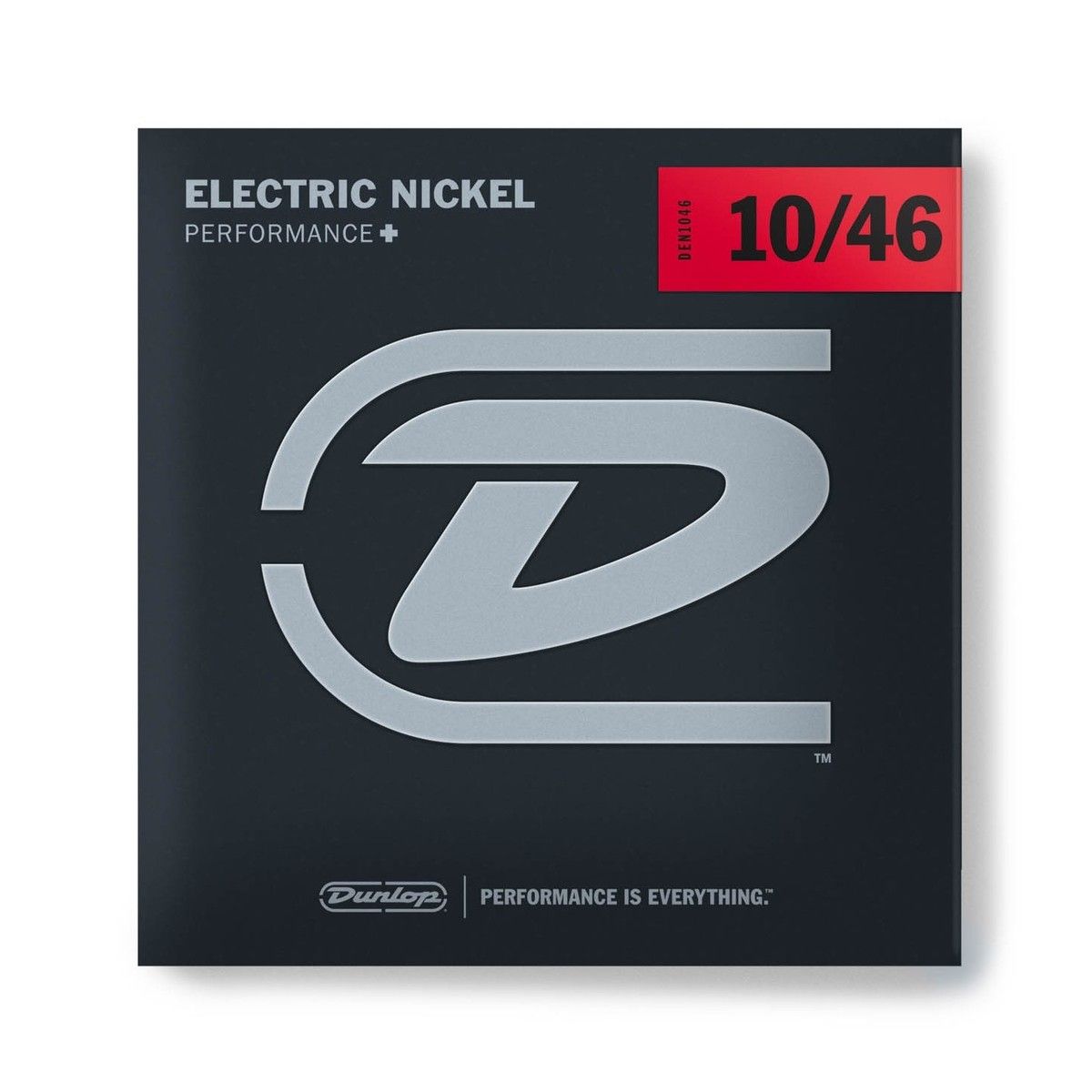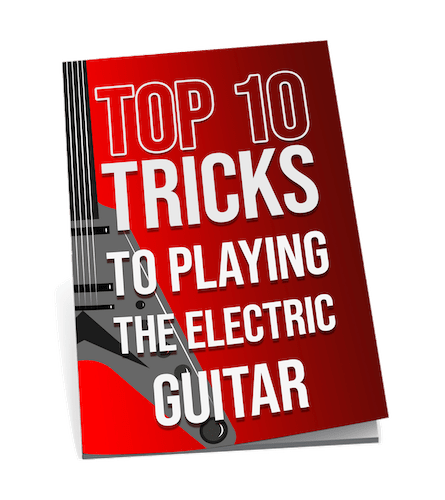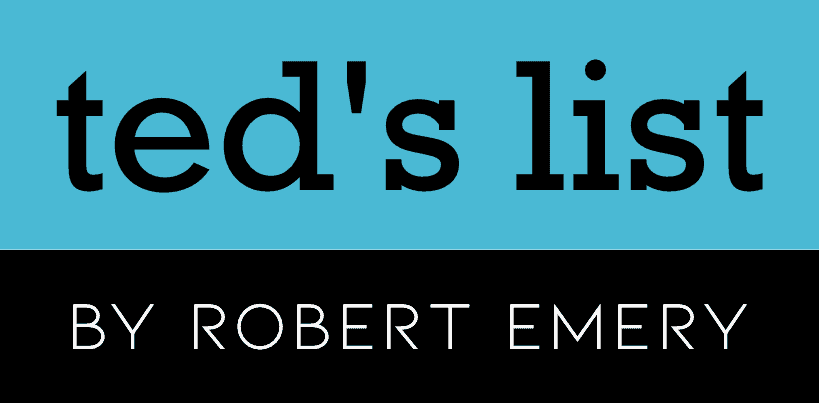Best
Light Gauge String
-
Overall: Unmatched tuning stability
-
Best Feature: Clean and bright tones with excellent projection
-
TedScore™: 9/10
Best
Medium Gauge String
-
Overall: Balanced response for precision playing
-
Best Feature: Tight lows and crisp highs for powerful leads
-
TedScore™: 9/10
Best
Heavy Gauge String
-
Overall: Lightweight yet durable construction
-
Best Feature: Retains tension even when tuning down to lower notes
-
TedScore™: 9/10
Have you ever wondered, “How many strings does an electric guitar have?”
When you’re checking out electric guitars, you’ll notice they’re not all the same. When I first picked up an electric guitar, those six strings felt like a ticket to a world of music.
Most electric guitars have six strings, but there’s a whole world of strings to explore. Keep reading, and I’ll guide you through the standard six-string guitar to some wild, string-loaded variations! Let’s rock out and explore this stringed world together.
Traditional Electric Guitars with Six Strings

Anatomy of a six-string electric guitar
The six strings on an electric guitar are usually made of steel or nickel-plated steel. They vary in thickness, with the thinnest string being the high E string and the thickest string being the low E string.
Each string is attached to the guitar’s headstock, passes over the fretboard, and is secured at the bridge, which is located on the body of the guitar itself.
Commonly used tuning for six-string electric guitars
The most common tuning for a six-string electric guitar is standard tuning, which is E-A-D-G-B-E.
When the steel strings are not fretted, they generate the notes E, A, D, G, B, and E in ascending order from low to high.
However, alternative tunings, such as drop D tuning or open tunings, with strings tuned to different pitches, are also popular among guitarists for achieving specific sounds and playing styles.
Pros and cons of playing a six-string electric guitar
Playing a six-string electric guitar has its advantages and disadvantages. Here are a few pros and cons to consider:

Pros:
- Versatility: With six guitar strings, you have a wide range of notes and can play various genres of music.
- Familiarity: Most beginner guitar lessons and resources are geared towards six-string guitars, making it easier to find instructional materials.
- Affordability: Six-string electric guitars are widely available at different prices, making them more accessible to beginners.

Cons:
- Limited range: A six-string guitar has a narrower tonal range than guitars with more strings.
- Technique limitations: Certain advanced techniques, like extended-range tapping or chordal fingerstyle playing, may be more challenging or impossible on a six-string guitar.
Alternative Electric Guitars with Seven or Eight Strings

The traditional six-string electric guitar may no longer be enough for those looking to expand their musical horizons. This is where seven and eight-string electric guitars come into play now.
These alternative instruments offer additional strings, giving musicians more range and versatility.
Seven-string electric guitars feature an extra low B string, allowing players to access lower notes and create deeper, heavier sounds.
Eight-string electric guitars go a step further, adding high E string, giving classical guitar-ists more options to explore in their playing.
Advantages of playing a seven or eight-string electric guitar

Extended Range
The extra strings on a seven or eight-string guitar provide a wider range of notes to work with.
This allows musicians to experiment with different chord voicings, melodies, and harmonies that wouldn’t be possible on a standard guitar with six strings.
New Genres and Styles
Many modern metal and progressive rock musicians utilize seven or eight-string guitars to achieve the deep, heavy, and complex sounds associated with these genres.
These guitars are also popular in jazz and fusion genres, where musicians use the extended range for improvisation and soloing.
Creative Expression
More strings mean more possibilities for creativity. Musicians can explore new techniques, such as fingerstyle playing, tapping, and chord inversions, to create unique sounds and textures.
Challenges and considerations for seven or eight-string electric guitars

Learning Curve
Transitioning from a six-string guitar to a seven or eight-string guitar requires some adjustment. The extra strings can be overwhelming at first, but players can adapt to the extended range with practice and patience.
String Tension and Setup
The additional strings can put more tension on the neck and affect the guitar’s overall setup. It’s important to have a knowledgeable technician set up the guitar properly to ensure optimal playability.
Cost
Seven and eight-string electric guitars tend to be more expensive than their six-string counterparts. This is due to the added complexity of construction and the increased demand for these instruments in niche markets.
Specialty Electric Guitars with More than Eight Strings

Exploration of guitars with more than eight strings
Electric guitars are versatile, allowing musicians to create a wide range of sounds and styles. While most electric guitars have six strings, there are specialty models available with more strings.
These guitars are often used in specific genres that require extended range and a broader tonal palette. The most common options beyond eight strings are nine-string, ten-string, and even twelve-string guitars.
Unique features and uses of multi-string electric guitars
Multi-string electric guitars offer several unique features and uses. The additional strings provide a wider frequency range, allowing guitarists to play lower notes and achieve a heavier, more defined sound.
They’re particularly popular among heavy metal and progressive rock guitarists who need the extra low-end power and versatility for complex chord progressions and extended-range melodies.
These guitars often have extended scale lengths and wider fretboards to accommodate the additional strings. The neck profile may also be designed for ease of playability, ensuring that the extra strings are easily accessible and playable.
Some models feature fanned frets, which are angled to optimize intonation and string tension across the fretboard.
Factors to Consider When Choosing the Number of Strings for Your Electric Guitar
When deciding on the number of strings for your electric guitar, there are a few factors you should consider:

Musical Style
Your musical style plays a significant role in determining the number of strings you need. A six-string guitar would be suitable for primarily playing rock, blues, or pop music.
However, you might benefit from having more strings if you’re into genres like jazz, metal, or progressive rock.

Playing Technique
Your playing technique also plays a role in determining the number of strings you prefer.
If you enjoy complex fingerstyle playing or intricate soloing, additional strings can provide more tonal range and allow for more complex and intricate arrangements.

Comfort and Preference
Ultimately, the decision should come down to your personal comfort and preference.
Some guitarists find it more comfortable to play with fewer strings, while others appreciate the added range and possibilities that come with more strings.
Our Recommended Electric Guitar Strings

FEATURES: High Carbon Steel Alloy Design
OTHER INFO: Plain Steel Gauges: .008, .010, .015 and Nickel Wound Gauges: .021, .030, .038
D'Addario NYXL0838 Nickel Wound, Extra Super Light
When you check the price above, you’ll see there are loads of great places to buy this item. Our personal favorite is Gear4music.
It is the largest music retailer in the UK and fast becoming the most respected online music shop in the US too. Their customer service is excellent, they have competitive prices, really fast shipping, and usually have the longest guarantee.
Most professional musicians use Gear4music, so there is no reason why you shouldn’t too!
- Lightest possible string tension
- Greater freedom while playing
- Unmatched tuning stability
- Exceptional build quality
- Lasting longer than average strings
- Clean and bright tones with excellent projection
- May require more finger strength
- Can have a higher cost compared to traditional strings
The professional musician who wrote this article combined many things,
from the product build, manufacturer’s reputation through to feedback
from other users, to create our famous TedScore™.

FEATURES: .10 .13 .17 .26 .36 .46 Gauge
OTHER INFO: Nickel Wound Material
Dunlop Electric Guitar Strings, Nickel Wound, Medium 10-46
When you check the price above, you’ll see there are loads of great places to buy this item. Our personal favorite is Gear4music.
It is the largest music retailer in the UK and fast becoming the most respected online music shop in the US too. Their customer service is excellent, they have competitive prices, really fast shipping, and usually have the longest guarantee.
Most professional musicians use Gear4music, so there is no reason why you shouldn’t too!
- Tight lows and crisp highs for powerful leads
- Durable construction for robust playing
- Balanced response for precision playing
- Smooth feel for comfortable playing
- Break in-period is quick
- May not be suitable for all styles of playing
- Tension may be too low for some players
The professional musician who wrote this article combined many things,
from the product build, manufacturer’s reputation through to feedback
from other users, to create our famous TedScore™.

FEATURES: Steel
OTHER INFO: 6 strings – 10, 13, 17, 26, 36, 46 gauges.
Ibanez IEGS61 Electric Guitar Strings Set
When you check the price above, you’ll see there are loads of great places to buy this item. Our personal favorite is Gear4music.
It is the largest music retailer in the UK and fast becoming the most respected online music shop in the US too. Their customer service is excellent, they have competitive prices, really fast shipping, and usually have the longest guarantee.
Most professional musicians use Gear4music, so there is no reason why you shouldn’t too!
- Superior tone and durability
- Hexagonal steel cores for increased sustain and clarity
- Strong and flexible nickel wound strings
- Easy bending with ample volume and power
- Affordable pricing for musicians of all levels
- Breakage potential, if not properly maintained
- Not suitable for extreme bending.
- Lower notes may lack definition at high-volume levels.
The professional musician who wrote this article combined many things,
from the product build, manufacturer’s reputation through to feedback
from other users, to create our famous TedScore™.

FEATURES: Nickel
OTHER INFO: Gauge: .007, .009, .011, .020w, .030, .038
Dunlop R.Willy Electric Guitar Strings Extra Light
When you check the price above, you’ll see there are loads of great places to buy this item. Our personal favorite is Gear4music.
It is the largest music retailer in the UK and fast becoming the most respected online music shop in the US too. Their customer service is excellent, they have competitive prices, really fast shipping, and usually have the longest guarantee.
Most professional musicians use Gear4music, so there is no reason why you shouldn’t too!
- Rich articulation and punchy tone.
- Smooth, silky feel for seamless performance.
- Perfectly balanced for high-speed picking and soaring leads.
- Durable design ensures the strings will last longer and maintain their feel.
- Not suitable for those seeking a darker or heavier tone.
- Lighter strings may require extra attention when tuning.
The professional musician who wrote this article combined many things,
from the product build, manufacturer’s reputation through to feedback
from other users, to create our famous TedScore™.

FEATURES: String Gauges: 12, 16, 24p, 32, 44, 56
OTHER INFO: Ultra-thick
Ernie Ball Not Even Slinky 2626 Nickel Guitar Strings 12-56
When you check the price above, you’ll see there are loads of great places to buy this item. Our personal favorite is Gear4music.
It is the largest music retailer in the UK and fast becoming the most respected online music shop in the US too. Their customer service is excellent, they have competitive prices, really fast shipping, and usually have the longest guarantee.
Most professional musicians use Gear4music, so there is no reason why you shouldn’t too!
- Great sound when playing chords and single notes.
- Retains tension even when tuning down to lower notes
- Smooth and fast action on high frets
- Lightweight yet durable construction
- Best for metal and rock music
- May be too heavy for some players.
The professional musician who wrote this article combined many things,
from the product build, manufacturer’s reputation through to feedback
from other users, to create our famous TedScore™.
How Many Strings Does An Electric Guitar Have?
Summary
Our discussion about electric guitars has been a blast! But before we wrap it up, let’s dive into the world of these six-string wonders, which are the norm in most cases.
But wait, there’s more! Some guitars have up to eight strings for those who want more depth and complexity. Are you interested in checking out the different types?
Here’s a nifty breakdown:
- Standard Electric Guitars:
- Typically, have 6 strings
- Tuned E-A-D-G-B-E
- Extended Range Guitars:
- Can have 7 to 8 strings (and sometimes even more)
- Additional strings are usually tuned to lower notes
Extended-range guitars can reach tones that regular six-string guitars can only dream of, making them perfect for genres that love that extra low-end rumble.
The number of strings affects how you play, the range of sounds you can make, and the overall feel of the music. Whether you’re strumming chords or playing solos, there’s a string setup that fits your style just right.
Keep playing, rocking, and most importantly, let’s have tons of fun on this musical journey!
Before you go…
Are you ready to rock out without breaking the bank? Look no further than Our Guide To The Best Cheap Electric Guitars!
Get ready to shred like a pro and unleash your inner rockstar!
FAQ's
An electric guitar typically has six strings, although some models may have seven or eight strings. The most common tuning for a six-string electric guitar is E-A-D-G-B-E, starting with the thickest string at the top.
Electric guitars can have either five or six strings, although six-string electric guitars are the most common. Some guitarists prefer the extended range of a seven-string guitar, while others may opt for a five-string guitar, for easier playing and a wider range of notes.
No, electric and bass guitar strings are not the same. Bass guitars typically have thicker strings than electric guitars, which produce a deeper and more resonant sound.
While it’s possible to use electric guitar strings on an acoustic guitar, it’s not recommended as the tension of the strings can damage the instrument.
It’s important to use strings designed explicitly for acoustic or classical guitars to ensure the best sound and longevity of the instrument.
Both acoustic and electric guitars can have 12 strings, but there are also other types of guitars that feature 12 strings, such as the harp guitars.
There’s also the double-neck guitar with two sets of strings, one for each neck, with each set typically consisting of six strings.












9 strings, because 8 just isn’t enough for some people, huh?
loved reading about the different guitars. really wanna try an 8-string now lol. thanks for the info!
Not sure about the notion that more strings equals more creativity. It’s not just the number of strings but how you use them. Look at Jimi Hendrix or Stevie Ray Vaughan; six strings and still legendary. More strings can be great for some, but it’s not the only way to push musical boundaries.
Hey Lewis Turner, rad article! I’ve been thinking of diving into the world of seven or eight-string guitars. You mentioned the new genres and styles these guitars can explore. Could you share some specific examples of music or artists that really showcase what these instruments can do? Cheers!
Animals As Leaders for eight-string stuff! Tosin Abasi is a wizard.
For seven-string, check out bands like Dream Theater. Their guitarist, John Petrucci, does some incredible work with extended range guitars.